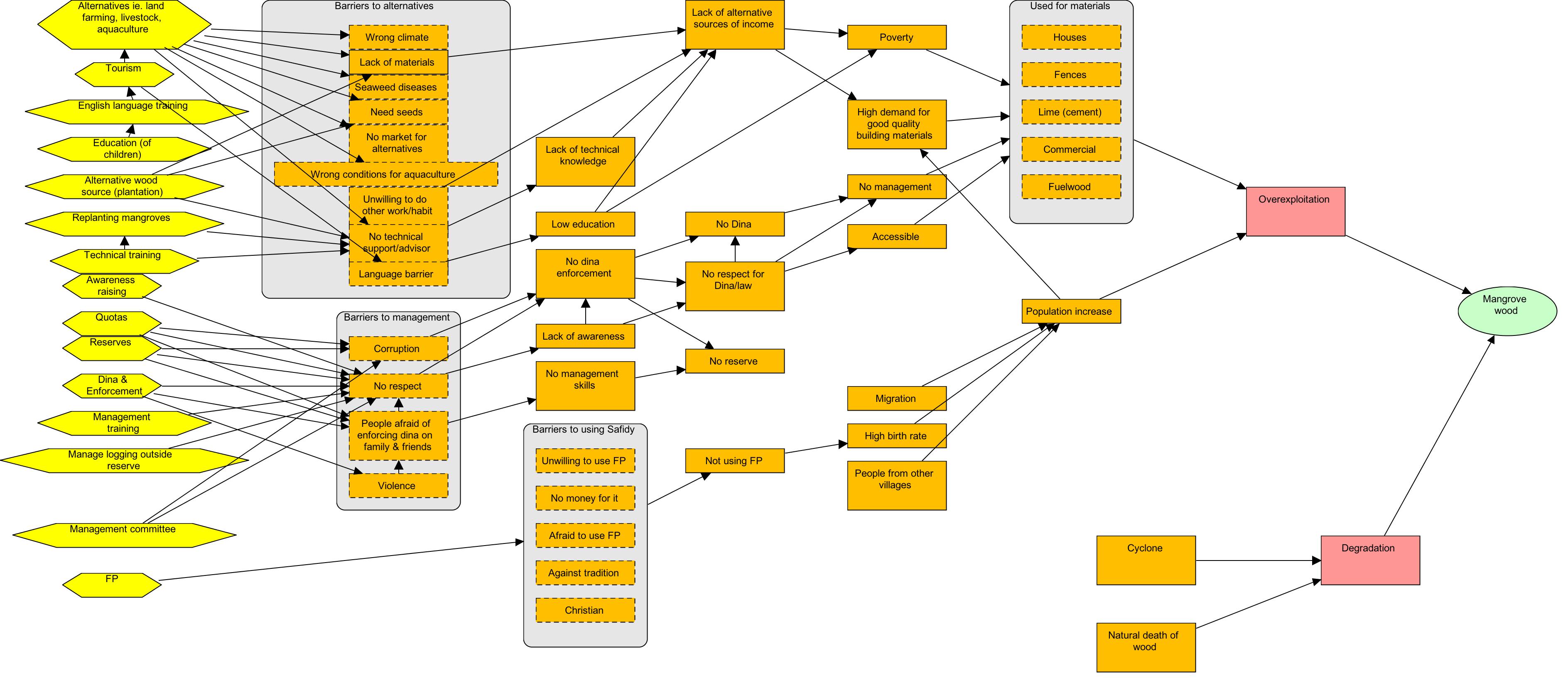

- L'exercice participatif d'élaboration d'un modèle conceptuel et d'une stratégie vise à identifier les moteurs et les causes sous-jacentes de la disparition des mangroves, ainsi que les stratégies/solutions potentielles qui pourraient être mises en œuvre pour réduire les menaces qui pèsent sur les mangroves et promouvoir leur utilisation durable.
- À la fin de l'exercice, la communauté a élaboré un modèle conceptuel. Ce modèle décrit les facteurs de perte de la mangrove dans leur communauté et les autres facteurs qui contribuent à cette perte.
- Ils identifient une ou plusieurs solution(s) et travaillent sur les activités qu'ils doivent mettre en œuvre pour atteindre les résultats souhaités grâce à une théorie du changement (TdC).
- L'exercice est réalisé avec les membres de la communauté dans le cadre d'un groupe de discussion. L'élaboration du modèle conceptuel et de la TdC est réalisée à l'aide de papier et de craies de différentes couleurs.
- Après les réunions participatives, le modèle conceptuel final avec l'évaluation des menaces et les modèles de TdC sont numérisés à l'aide du logiciel MiradiTM (2013).
- L'annonce de la planification est envoyée au chef du village avant l'exercice ;
- Une forte participation et la présence de toutes les parties prenantes pendant l'exercice et les participants doivent être pleinement conscients de l'objectif de l'exercice ;
- Le facilitateur de l'organisation de soutien a suffisamment de compétences et est familier avec l'exercice du modèle conceptuel et capable de motiver les gens à exprimer leurs idées ;
- L'organisation de soutien est capable de s'adapter au contexte local (en utilisant le matériel disponible).
Pour faire face aux réticences de la communauté et améliorer le dialogue entre les membres de la communauté, il est recommandé d'employer deux facilitateurs communautaires du village pour aider à l'exercice de la théorie du changement. Il est préférable d'embaucher des personnes déjà engagées dans les activités de gestion de l'EMMT (comité d'application du dina, commission de la mangrove, groupe de femmes). Les facilitateurs communautaires sont formés par le personnel technique de l'organisation de soutien un jour avant l'exercice participatif de la théorie du changement. Les volontaires de la communauté doivent être invités à présenter les résultats de leur travail de groupe, afin d'évaluer le niveau d'adhésion de la communauté au modèle conceptuel qu'ils ont élaboré. Il est essentiel d'assurer la représentation des principaux groupes de parties prenantes, ainsi que des femmes et des jeunes qui pourraient être marginalisés. Si nécessaire, séparez les hommes et les femmes dans des groupes différents pour faciliter une discussion ouverte.